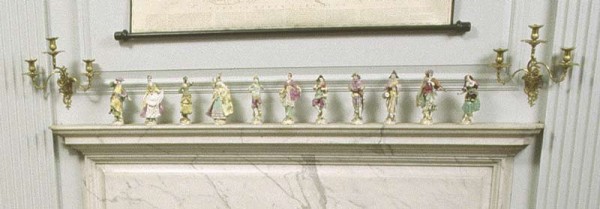
Ranelagh masquerader figures, Chelsea Porcelain Manufactory, London, England, gold anchor period, 1759–1763. Soft-paste porcelain. H. of tallest 8 1/2". Mark, on seven of the eleven figures: gold anchor. (Unless otherwise noted, all images are courtesy Colonial Williamsburg Foundation.) The eleven masqueraders shown here are displayed on the mantel of the Dining Room at the Governor’s Palace, Colonial Williamsburg.

Jack O’Green and Mate, Chelsea Porcelain Manufactory, London, England, gold anchor period, 1759–1763. Soft-paste porcelain. H. of tallest 8". Marks: gold anchor on Jack; impressed “M” on mate. This is the only natural pair among the Ranelagh masqueraders.
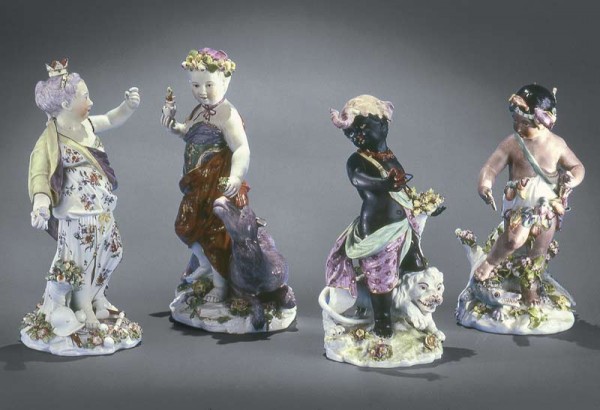
The Four Continents, Derby Porcelain Manufactory, Derbyshire, England, patch mark period, ca. 1760. Soft-paste porcelain. H. of tallest 12 3/4". Marks: None.

The opening dinner of the ninth Summit of Industrialized Nations, Supper Room, Governor’s Palace, Colonial Williamsburg, Virginia, 1983. President Reagan is shown at the center, with The Four Continents illustrated in fig. 3 ornamenting the table in front of him.
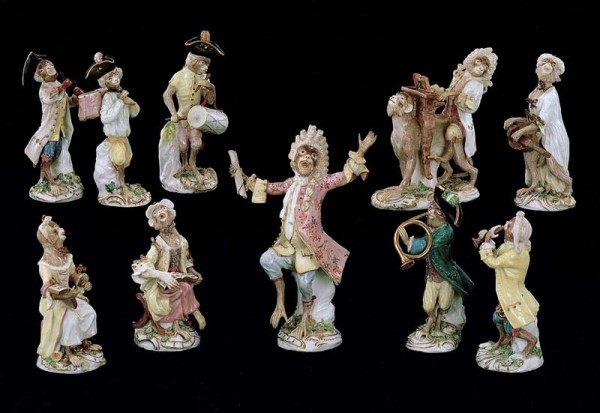
Monkey band figures, Chelsea Porcelain Manufactory, London, England, red anchor period, ca. 1756. Soft-paste porcelain. H. of tallest 8". Mark, on seven of the ten: red anchor.
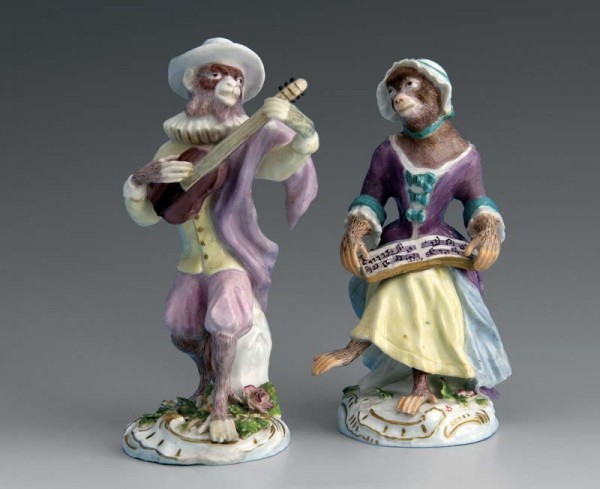
Monkey band figures, Chelsea Porcelain Manufactory, London, England, red anchor period, ca. 1756. Soft-paste porcelain. H. of tallest 5 3/4".

Dressing box, American China Manufactory (Bonnin and Morris), Philadelphia, Pennsylvania, 1770–1772. Soft-paste porcelain. H. 4".

Entry of the dressing box illustrated in fig. 7, in the “Catalogue of China” compiled by Elizabeth Clifford Morris Canby in the nineteenth century, in which the basket is described as a “Box open worked.”

Tea and coffee service, Worcester Porcelain Manufactory, Worcester, England, 1765–1775. Soft-paste porcelain. H. of coffee pot 9 1/8".

Four milk jugs, Worcester Porcelain Manufactory, Worcester, England, 1750–1755. Soft-paste porcelain. H. of tallest 3 1/4".
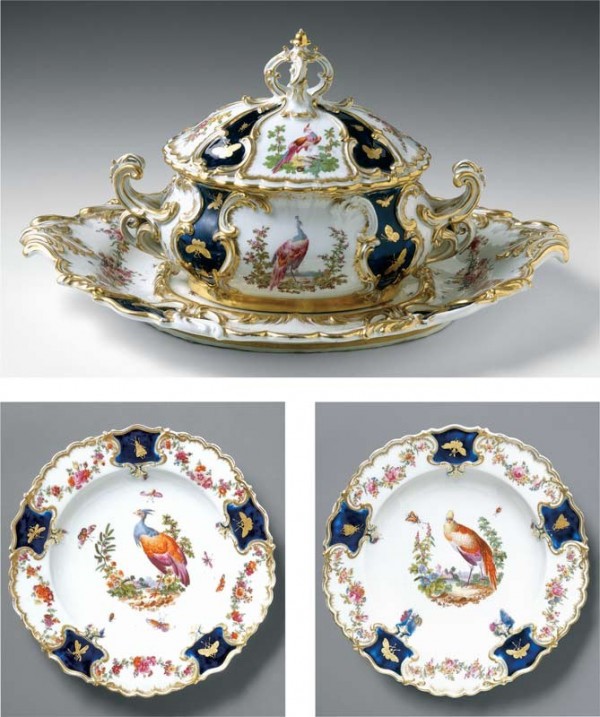
Tureen, cover and stand, and soup plates, Chelsea Porcelain Manufactory, London, England, gold anchor period, 1762–1763. Soft-paste porcelain. L. of tureen 13". Mark, on all: gold anchor. (Courtesy, Winterthur Museum and Garden, Gift of the Campbell Soup Company.) These objects are from the Mecklenburg-Strelitz service.
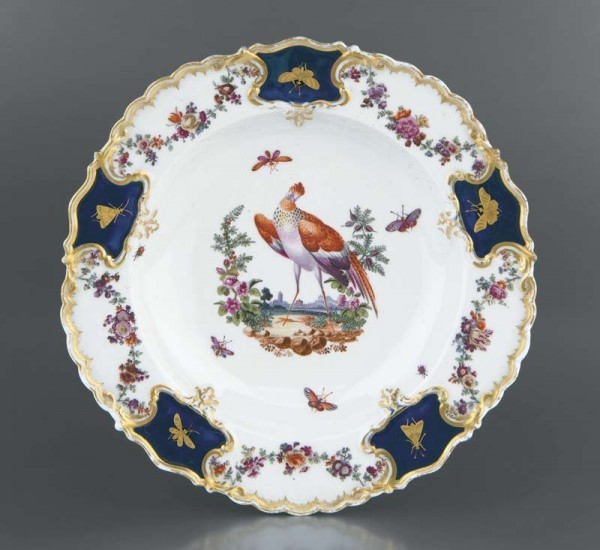
Soup plate, Chelsea Porcelain Manufactory, London, England, gold anchor period, 1762–1763. Soft-paste porcelain. D. 9 3/8". This plate is from the Mecklenburg-Streliz service.
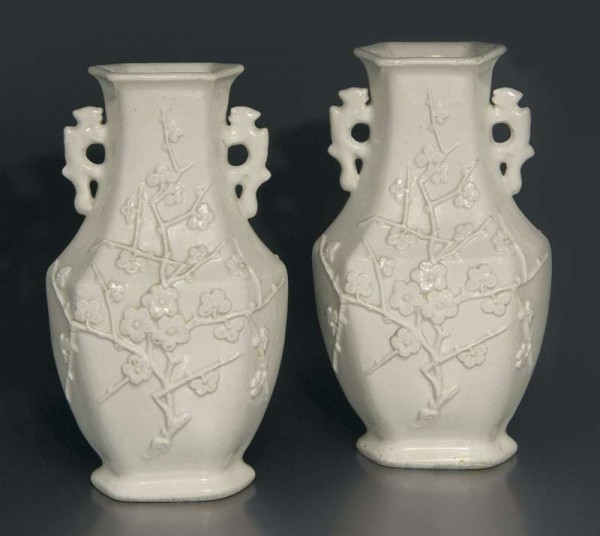
Pair of vases, Chelsea Porcelain Manufactory, London, England, raised anchor period, 1750–1752. Soft-paste porcelain. H. 9 1/8".
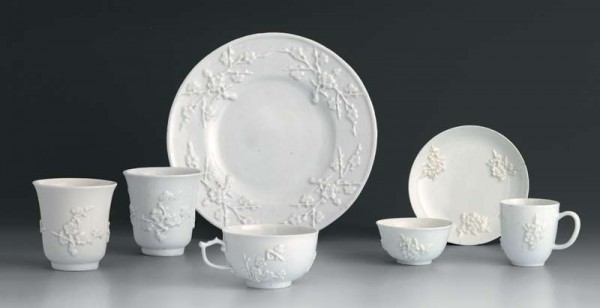
Objects with prunus decoration: Beaker, Dehua, China, 1700–1740. Hard-paste porcelain. H. 3". Beaker, Chelsea Porcelain Manufactory, London, England, raised anchor period, 1750–1752. Soft-paste porcelain. H. 3 1/8". Plate, Chelsea Porcelain Manufactory, London, England, raised anchor period, 1750–1752. Soft-paste porcelain. D. 8 1/4". Cup, Meissen Porcelain Manufactory, Meissen, Germany, ca. 1720. Hard-paste porcelain. H. 1 3/8". Two cups and one saucer, Bow Porcelain Manufactory, London, England, ca. 1755. Soft-paste porcelain. H. of tallest cup 2 3/8". D. of saucer 4 5/8".

Tureen and cover, Bow Porcelain Manufactory, London, England, ca. 1755. Soft-paste porcelain. L. 13".

Interior of the tureen illustrated in fig. 15.

Britannia Mourning the Death of the Prince of Wales, Vauxhall Porcelain Manufactory, London, England, 1751–1752. Soft-paste porcelain. H. 11 1/4". Plate, Vauxhall Porcelain Manufactory, London, England, 1750–1760. Soft-paste porcelain. D. 8 3/4".
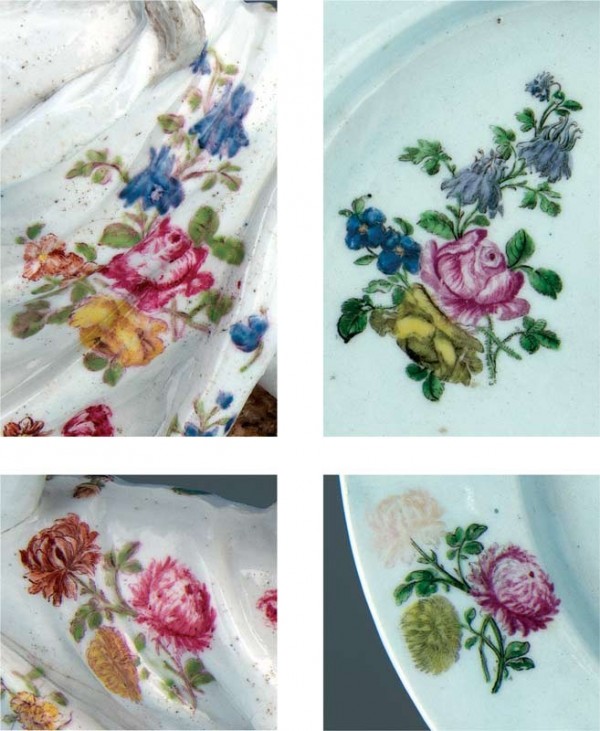
Details of the figure and plate illustrated in fig. 17.
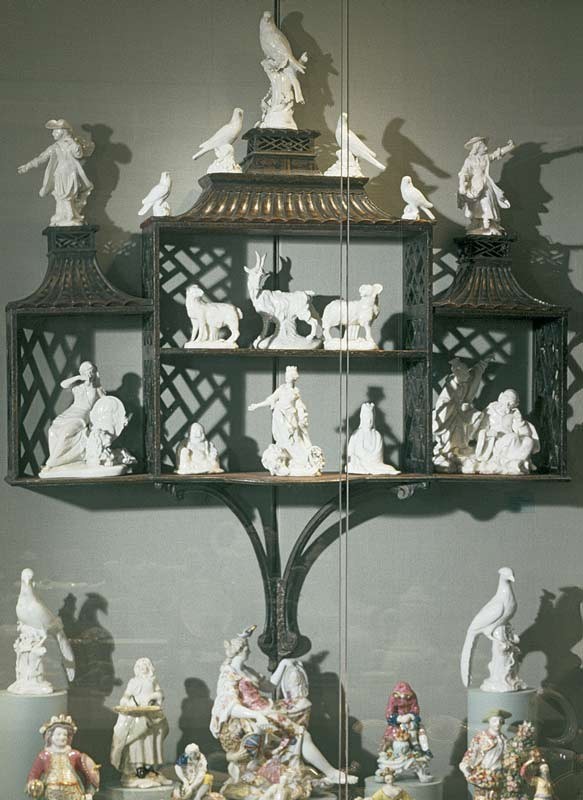
Bracket shelf dressed with English soft-paste porcelain figures, English porcelain installation at the Art Museums of Colonial Williamsburg: Finch, Chelsea Porcelain Manufactory, London, England, triangle period, 1745–1749. H. 7 3/4". Grape gatherers, Derby Porcelain Manufactory, Derbyshire, England, ca. 1755. H. of tallest 7". Small birds, Chelsea Porcelain Manufactory, London, England, raised anchor period, 1750–1752. H. 2 3/4". Large birds, Derby Porcelain Manufactory, Derbyshire, England, ca. 1755. H. 4 1/8". Goat, ewe, and ram, Derby Porcelain Manufactory, Derbyshire, England, ca. 1755. H. of tallest 6 1/2". Pu-tai Ho-shang, Chelsea Porcelain Manufactory, London, England, triangle period, 1750–1752. H. 3 1/4". Britannia, Earth, and Europa, Derby Porcelain Manufactory, Derbyshire, England, ca. 1755. H. 6 7/8". Kuan Yin, Chelsea Porcelain Manufactory, London, England, raised anchor period, 1750–1752. H. 4 1/2". Britannia, Gouyn Factory, London, England, 1751–1753. H. 7 3/4". Group of Chinese figures, Derby Porcelain Manufactory, Derbyshire, England, ca. 1755. H. of tallest 7 7/8".
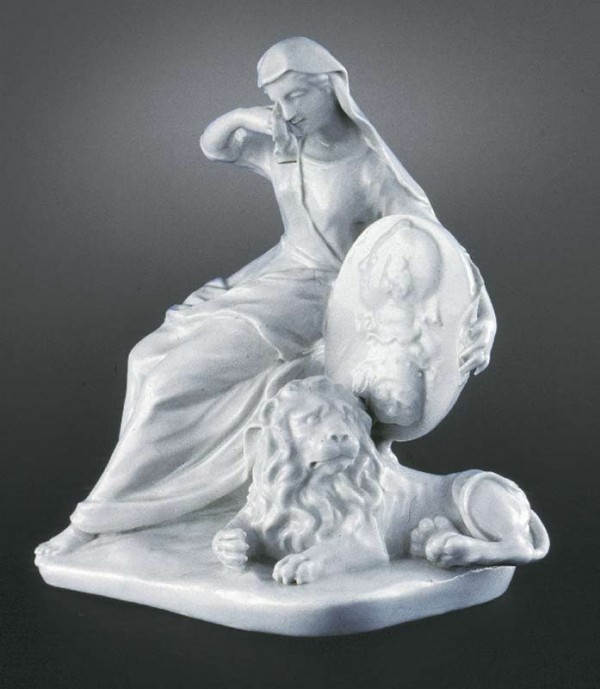
Britannia, Gouyn Factory, London, England, 1751–1753. Soft-paste porcelain. H. 7 3/4".
